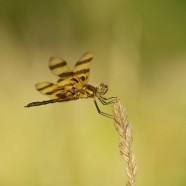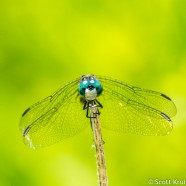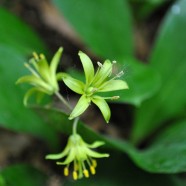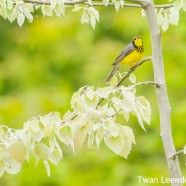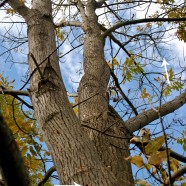Halloween Pennants (Celithemis eponina)
Sean recently had the enviable problem of many Halloween Pennants (Celithemis eponina) around! The beautiful dragonfly species was photographed wonderfully here by RTPI Affiliate Sean Graesser.
Read MoreBlue Dasher Stare
You feel like having a staring contest? This Blue Dasher (Pachydiplax longipennis) is game. Good luck! You’re going to need it…
Read MoreBluebead Lily (Clintonia borealis)
Wildflowers continue to pop as the warm temperatures and sunshine are becoming more abundant. One pretty little flower that is currently in bloom is Clintonia borealis, more commonly known as Bluebead Lily. This plant gets its name not from the flowers it produces, but instead from the beautiful fruits that become noticeable during mid to late summer. As the summer season progresses the flowers will be replaced by little green fruits, that slowly turn white and then eventually a deep blue, looking almost like porcelain beads. While these fruits may look appealing, they are said to be quite...
Read MoreCanada Warbler
This Canada Warbler (Cardellina canadensis) looks like a jewel in the cheery spring scene here as captured by Twan. Let’s hope it decides to stay in the Chautauqua-Allegheny region to breed! That necklace is such a wonderful accessory.
Read MoreBirds As EAB Indicators
Being small in size as an adult and hidden underneath tree bark as larvae, Emerald Ash Borer (EAB) can be rather difficult for humans to detect. For bark-foraging birds such as woodpeckers however, this is not a difficult task. As these birds move up and down a tree’s trunk and branches, they listen for larvae chewing on the wood and can even feel vibrations from the larvae moving through the galleries they create. Once detected, woodpeckers will hammer away at the bark in order to collect the larvae beneath. While the larvae is removed from the bark, a hole and missing bark around...
Read More



